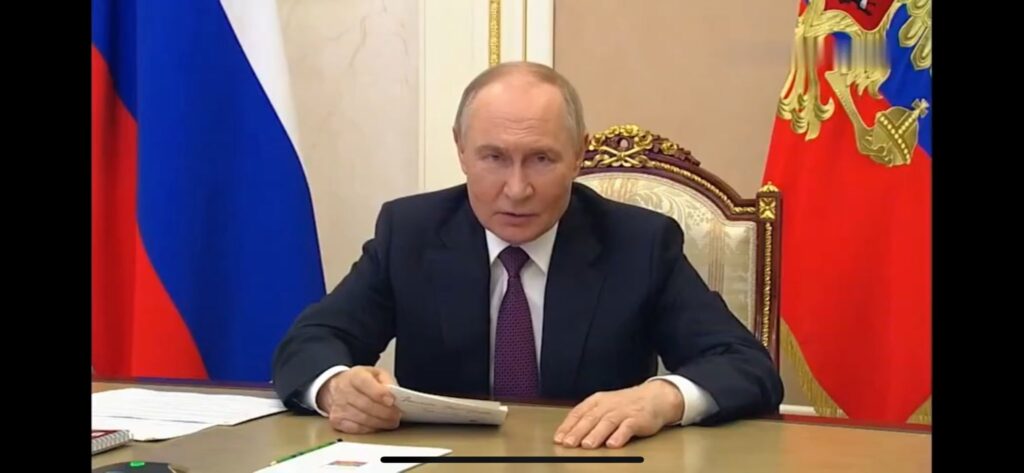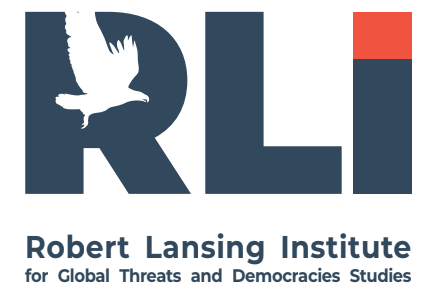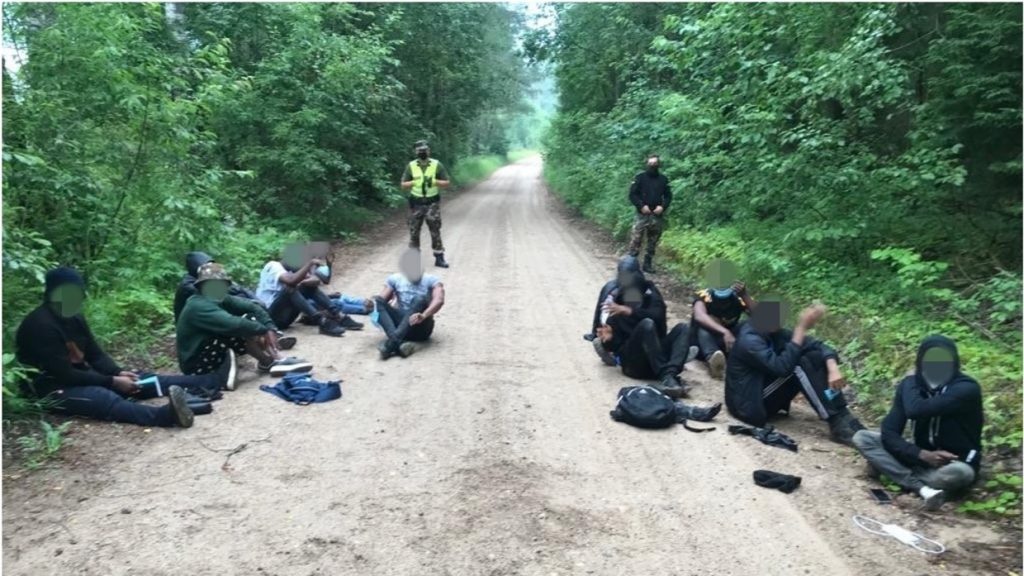In a recent provocative statement, a deputy from the Russian Ministry of Foreign Affairs (MFA) declared that ending the war in Ukraine would require the withdrawal of NATO troops from the Baltic states. This claim introduces a dangerous new layer to Russia’s demands in its ongoing war against Ukraine. By linking the future of Ukraine with the military posture in Estonia, Latvia, and Lithuania, Russia signals not only the escalation of its geopolitical ambitions but potentially a strategic shift toward the Baltic region itself.
I. Why Link the Baltic States to the Ukraine War?
1. Redefining the Conflict as a NATO–Russia War
By expanding its demands beyond Ukraine, Russia seeks to reframe the war not as an aggression against a sovereign neighbor, but as a defensive campaign against NATO expansion. Including the Baltics in the equation turns the narrative from “Russia vs. Ukraine” to “Russia vs. NATO encroachment,” reinforcing Kremlin propaganda that the war is a result of Western provocation, not Russian aggression.
2. Undermining NATO’s Credibility and Unity
Moscow likely views the Baltic deployments as politically vulnerable links in NATO’s eastern flank. By raising their presence as a point of negotiation, the Kremlin may be probing the Alliance for divisions, particularly among Western European states less directly threatened by Russia. If Russia can make NATO’s security presence in the Baltics look negotiable, it may sow internal discord and weaken collective resolve.
3. Precedent for Buffer Zones
Russia’s historical obsession with buffer zones is reappearing in modern form. The withdrawal of NATO troops from the Baltics would mirror Russia’s demand for Ukraine to adopt neutral status. Moscow’s strategic doctrine views any NATO presence on former Soviet territory as a threat. Linking the two cases is thus part of a long-standing effort to roll back post-Cold War NATO enlargement.
II. Legal and Strategic Infeasibility of the Demand
1. NATO Status and National Sovereignty
The Baltic states—Estonia, Latvia, and Lithuania—are full NATO members under Article 5 protections. Their governments requested and host NATO Enhanced Forward Presence (eFP) battlegroups voluntarily, as part of collective defense. For Russia to demand the withdrawal of these forces is tantamount to challenging the sovereignty of those states.
2. National Armies Are NATO Forces
Each Baltic state contributes its own national military forces to NATO missions. Suggesting a withdrawal of “NATO troops” is effectively asking those nations to de-militarize themselves, or to break alliance commitments—an impossible and absurd demand under the NATO treaty framework.
3. Precondition Impossible to Meet Without NATO’s Collapse
Accepting such a condition would mean dismantling NATO’s eastern defense posture. This would destroy the credibility of the Alliance and encourage further Russian aggression. The unreasonableness of the demand suggests it is not meant as a genuine negotiating position, but as a maximalist ideological statement.
III. Strategic Signaling: A Warning of Broader Ambitions?
1. Psychological Warfare and Strategic Testing
This demand may function as a psychological test balloon. Moscow could be evaluating Western reactions to gauge how firm NATO’s commitment to the Baltics really is. Weak or ambiguous responses might embolden the Kremlin to escalate hybrid operations or provocations in the region.
2. A Signal of Future Expansionist Intent
By linking NATO’s presence in the Baltics to the war in Ukraine, Russia may be setting the stage for future justification of military action. If the West ever compels Ukraine to negotiate under Russian terms, Russia might claim that continued NATO presence in the Baltics violates the “peace conditions,” laying rhetorical groundwork for future conflict in the region.
3. Exploiting NATO’s Hesitancy
Russia may suspect that some NATO members—particularly in Western Europe—are uneasy with maintaining permanent military deployments near Russia’s borders. This rhetorical move may seek to energize anti-militarist, isolationist, or pacifist factions in those societies to pressure for withdrawal.
IV. Implications for NATO and Regional Security
1. Heightened Need for Baltic Security Guarantees
This development confirms that the Baltic states remain on Moscow’s radar, and potentially in its crosshairs. NATO must therefore reinforce—not reduce—its presence in the region, with increased rotations, joint exercises, and investment in rapid response capabilities.
2. Time for Strategic Clarity and Red Lines
The West must treat this statement not as a negotiation point, but as a threat. NATO’s messaging should clearly state that any aggression toward the Baltics will trigger collective defense, without ambiguity. This includes cyberattacks, sabotage, or gray-zone provocations.
3. Deterring Russia by Sealing Off Ambiguity
Just as Russia seeks to test NATO’s cohesion, the Alliance must show zero willingness to even entertain such demands. Appeasement here would open the door to similar threats against Finland, Poland, or Romania. Strength, clarity, and consistency are the only effective deterrents.
Russia’s demand that NATO withdraw troops from the Baltic states as a condition for ending the Ukraine war is not a legitimate peace proposal—it is a geopolitical warning shot. It serves as a rhetorical weapon designed to undermine NATO, test the resolve of member states, and lay the groundwork for further regional aggression. The very fact that Russia links these unrelated matters suggests an expansive strategic ambition that threatens not only Ukraine, but also the Baltics and the entire NATO eastern flank. The West must read this signal clearly—and respond not with negotiation, but with resolve and reinforcement.
NATO’s response to the Russian MFA deputy’s statement—that ending the war in Ukraine requires NATO troop withdrawal from the Baltic states—must be firm, strategic, and multidimensional. This is not simply rhetorical escalation; it is strategic signaling that could test the Alliance’s cohesion, deterrence posture, and credibility.
1. Publicly Reject the Statement as Illegitimate and Provocative
Silence or vague language would invite ambiguity and invite further escalation.
- Official NATO spokespersons and the Secretary General must immediately and publicly state that NATO forces are present in the Baltic states at the invitation of sovereign member governments, and no third country has the right to demand their removal.
- Reaffirm that NATO’s defense posture is defensive, legal, and fully in line with international commitments.
2. Increase Military Visibility in the Baltics (Strategic Messaging)
Russia often tests resolve by issuing threats. A visible reinforcement sends a clear deterrent signal.
How:
- Temporarily rotate additional NATO troops or assets into Estonia, Latvia, and Lithuania under the Enhanced Forward Presence (eFP) framework.
- Conduct joint high-readiness exercises, especially those simulating hybrid threats, disinformation, and territorial incursions.
- Position air defense and surveillance assets closer to Russian borders for rapid response.
3. Coordinate a Unified Political Response Among NATO and EU Members
Why: Russia aims to split NATO politically—especially between frontline and rear-line members:
- Ensure joint statements from Western and Eastern NATO members (e.g., France, Germany, the U.S., Poland, and the Baltic states) that clearly reject Russia’s terms.
- Use forums like the NATO-Russia Council (if reactivated) or the OSCE to label the Russian statement as a threat to European security architecture.
4. Treat the Statement as a Potential Warning Sign for Future Aggression
Russian diplomacy often precedes or parallels military action:
- Step up intelligence coordination across NATO to monitor signs of buildup or hybrid operations near the Baltics.
- Re-evaluate regional vulnerability scenarios, especially Kaliningrad-related flashpoints, Belarus-based deployments, and cyberattack potentials.
- Prepare pre-authorized response plans for scenarios short of full-scale invasion (e.g., cyber sabotage, airspace violations, proxy provocations).
5. Expand NATO Strategic Communication and Counter-Disinformation
Russia’s messaging is aimed not only at foreign governments but at NATO populations:
- Boost NATO StratCom campaigns across Europe explaining why presence in the Baltics is essential for peace—not escalation.
- Counter false narratives in local and international media, especially in states with high Russian-speaking populations or anti-NATO sentiments.
6. Link Ukraine Support with Baltic Deterrence:
Russia’s demand links the two—so NATO should do the same, but in reverse.
- Emphasize that helping Ukraine resist Russian aggression directly protects the Baltic states from being next.
- Use this opportunity to argue for sustained or increased aid to Ukraine, while accelerating NATO accession processes for friendly partners (like Sweden, if not already fully integrated).
7. Prepare for a New Front in Russia’s Hybrid Strategy:
Even if a conventional invasion is unlikely, Russia could escalate gray-zone tactics in the Baltics.
- Strengthen NATO’s hybrid warfare units, especially cyber defense, energy infrastructure security, and counter-intelligence across the Baltic states.
- Provide technical and logistical support to Baltic civilian resilience programs (e.g., media literacy, civic defense, reserve mobilization).
NATO Must Turn the Threat into a Strategic Opportunity
Russia’s statement is not just a bluff; it’s a warning of intent. NATO’s reaction must be one of clarity, unity, and readiness. The Baltic states are not bargaining chips—they are NATO territory. Treating this demand seriously, but firmly rejecting it with visible action, can reaffirm the credibility of NATO’s Article 5 guarantee and deter any expansion of Russian military ambitions beyond Ukraine.
I. Strategic Contextualization
1. Historical Precedents:
Berlin Crisis (1958–1961): Soviet demands to remove Western troops from West Berlin mirror current demands in the Baltics.
- 2008 Georgia & 2014 Crimea: Russia first issued maximalist “security” demands before invading.
This Shows a pattern that Russia uses extreme conditions as pretexts or smokescreens for aggression.
II. Russian Strategic Calculus
2. Kremlin Internal Logic & Audience
Add an analysis of why the Russian MFA made this statement now:
- Is it timed with military setbacks in Ukraine?
- Meant for a domestic audience, to signal strength or distract from internal issues?
- An attempt to prepare ground for “peace talks” with impossible conditions?
III. Risk Assessment and Scenario Building
3. Risk Matrix or Escalation Ladder
Introduce a basic scenario analysis or escalation ladder, such as:
- Phase 1: Increased Russian surveillance, airspace violations.
- Phase 2: Hybrid operations (cyberattacks, sabotage in Baltics).
- Phase 3: Proxy activity or kinetic strikes under false flags.
IV. Legal and Normative Analysis
4. International Law Implications
Briefly analyze how Russia’s demand violates:
- UN Charter Articles 1 and 2
- Helsinki Final Act (1975)
- Founding Act on Mutual Relations (NATO-Russia 1997) – ironically, which Russia repeatedly cites
V. Comparative Alliance Dynamics
VI. Countermeasures: Bold but Realistic Options
6. Long-Term NATO Strategy Adjustments
Expand from immediate reaction to strategic recommendations, like:
- Formalizing permanent NATO bases in the Baltics, as opposed to rotational presence
- Increasing tripwire forces or integrating more forward-deployed air and naval assets
- Bolstering civilian resilience funding through NATO’s Emerging Security Challenges Division
Value: Shows foresight — not just reacting to the problem, but reshaping the environment to prevent recurrence.
VII. Regional Voices and Agency
7. Integrate Baltic State Perspectives
Quote or analyze recent statements from leaders in:
- Estonia (typically most hawkish)
- Latvia (especially with its Russian-speaking population)
- Lithuania (most outspoken on Ukraine support)
VIII. Intelligence and Psychological Dimensions
8. Info-psychological Warfare Lens
Add a paragraph showing how this demand is part of Russian reflexive control doctrine: shaping enemy perceptions, creating dilemmas, and manipulating thresholds of tolerance.
Conclusion (Enhanced)
Close by emphasizing that Russia’s strategic horizon extends beyond Ukraine, and that failing to treat the Baltic threat seriously would repeat the 2014 Crimea mistake. The threat must be used to strengthen—not weaken—Western resolve, and to shape the postwar order around security, not appeasement.
Punishing Russia for its threatening and revisionist statements, like demanding NATO withdraw from the Baltic states, is essential not only to impose costs but also to prevent escalation and reinforce the rules-based international order. While these statements are technically not “acts of war,” they are strategic coercion attempts and should be countered accordingly.
A framework for realistic and effective punitive options, categorized by domain can look like:
1. Diplomatic Punishment
To UndermineRussia’s human intelligence network and signals consequences for verbal aggression:
a. Expel More Russian Diplomats
- Expel Russian officials across NATO/EU capitals under suspicion of intelligence or influence operations.
- Coordinate expulsions among multiple allies for maximum symbolic and operational impact.
b. To Punish Russia’s leadership elite socially and symbolically: Downgrade Bilateral Engagements
- Suspend or scale down existing diplomatic and cultural forums (e.g., Franco-Russian, German-Russian dialogues).
- Refuse visas for official Russian delegations to UN or OSCE platforms when such rhetoric is used.
2. Economic and Sanctions-Based Measures
a. Tto ie rhetoric to material consequences, especially in the propaganda and military realms: Introduce New Sanctions Targeting Defense and Propaganda Apparatus
- Sanction individuals in Russia’s Foreign Ministry who directly issue threats.
- Sanction Russian military-industrial companies linked to Baltic border deployments or Kaliningrad militarization.
- Ban Western firms from doing business with Russian media like Russia Today and Sputnik.
b. To Expand pressure while tying it directly to Russia’s destabilizing behavior: Escalate Secondary Sanctions on Countries Aiding Russian Sanctions Evasion
- Focus on Central Asian states, Turkey, or Gulf actors allowing Russian dual-use goods to flow through.
- Use this escalation as a response to the threat, not just as part of Ukraine sanctions.
3. Military Response (Non-Combat, But Strategic)
a. To Showthat coercive threats have the opposite effect—they increase NATO’s presence:
Move NATO to a “Forward Defense” Posture in the Baltics
- Transition Baltic deployments from rotational battalions to permanent brigades.
- Station more Western European and U.S. forces (especially French, German, or Canadian) to symbolically share the burden.
b. To Punish psychological warfare with psychological deterrence : Conduct Offensive Cyber Deterrence Exercises
- Publicly announce NATO-backed cyber operations simulating defense against Russian aggression or disinformation.
- Share “proof of concept” findings on Russian vulnerability in Kaliningrad’s digital infrastructure (without going operational).
4. Informational and Legal Counter-Punch
a. Label Russia a “Threat to Peace” in UN/OSCE Forums
- Use diplomatic platforms to officially declare Russia’s statements as threatening regional peace.
- Introduce a UN General Assembly resolution (non-binding) condemning Russian threats to the Baltics.
b. Launch a Strategic Communication Campaign in Russia’s Borderlands
- Create NATO/EU-funded media campaigns targeting Russian speakers in Kaliningrad, Belarus, and occupied territories.
- Expose lies, threats, and imperialist ambitions—while promoting Baltic NATO membership as peaceful and legal.
5. Legal Accountability Tools
a. Prepare War of Aggression Charges (Preemptively)
- Begin gathering legal evidence and build prosecutorial narratives that could be used in a future tribunal for crimes of aggression—not just in Ukraine, but across Europe.
A Response that Is Firm, Proportional, and Strategic
The goal is not just to punish Russia rhetorically, but to:
- Raise the cost of coercion
- Expose its weakness
- Strengthen NATO’s cohesion and deterrence
Every threat from Moscow should leave it weaker, not stronger.
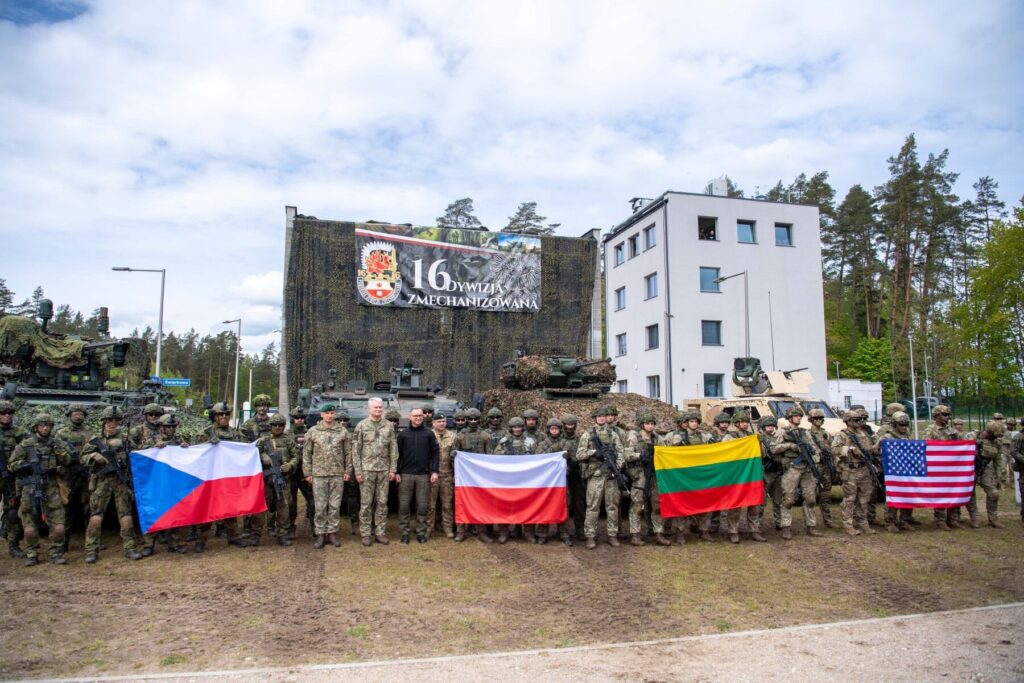
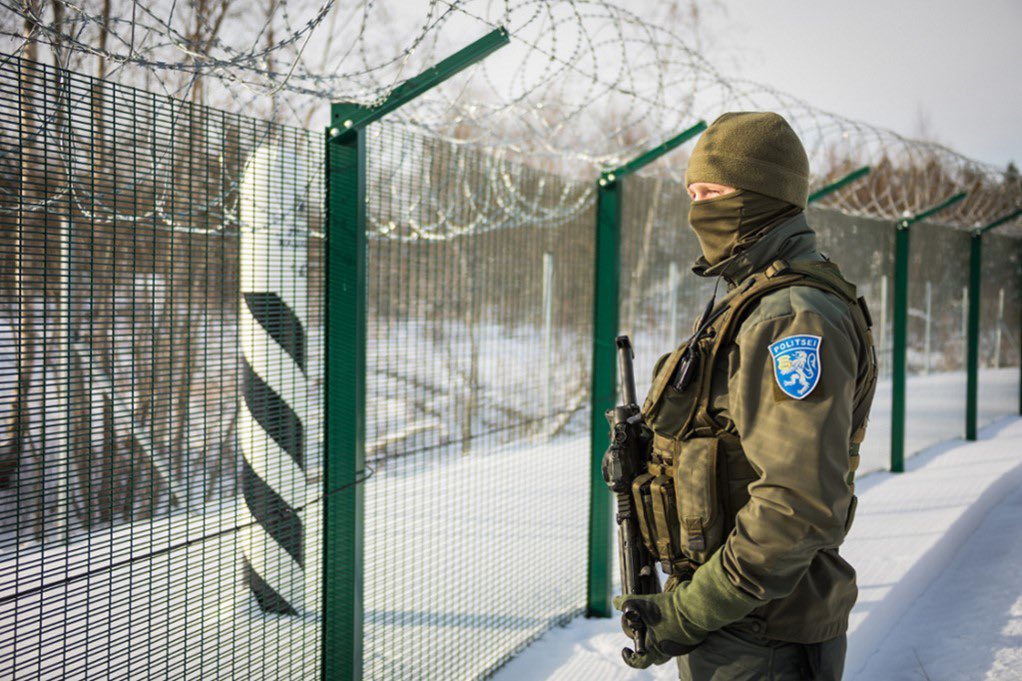
More on this story: Russia-provoked border incident in the Baltics goes to a higher level
